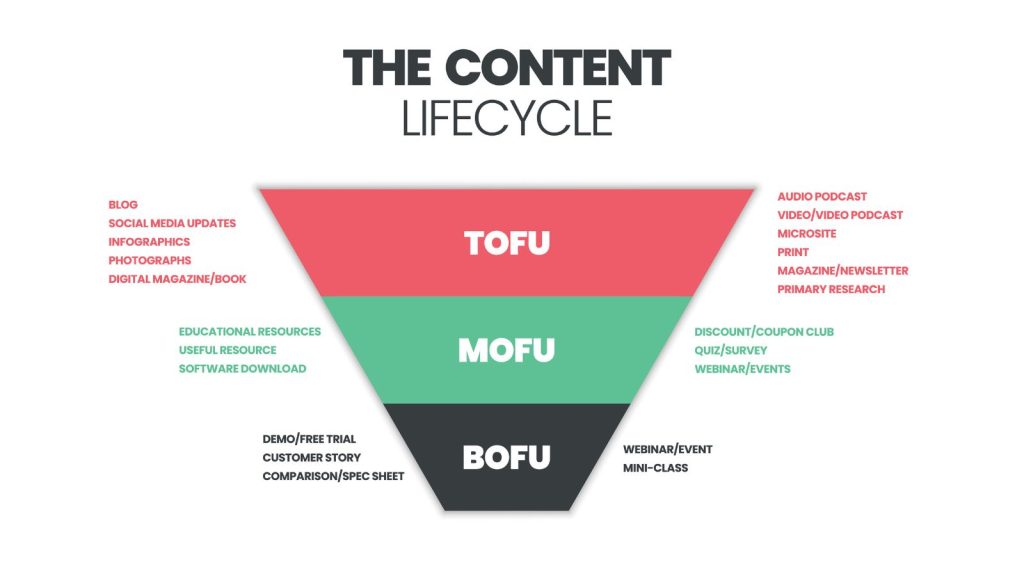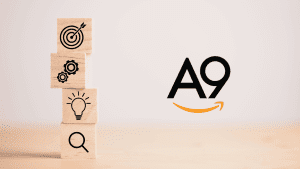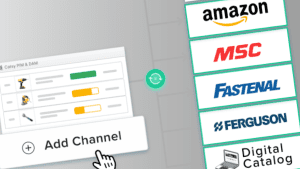How to Develop a Content Strategy? Building Buyer-Centric Content Marketing Strategy for Industrial Marketing

- Industrial marketers should align their content strategy to the B2B buyer's journey to attract and nurture prospects effectively.
- This involves understanding buyer motivations at each stage and creating educational, problem-solving content tailored to those needs.
- Accurate product information is crucial to support the content strategy's goal of establishing credibility and trust with buyers at every phase.
In this Article
A sleeping giant has woken up, and now it is hungry. This is the high-level summary of the Content Marketing Institute’s (CMI) 13th Annual B2B Content Marketing report. According to the report, content marketing is important to 71% of the business-to-business (B2B) marketers surveyed. The report also detailed that 40% of marketers have a documented content marketing strategy for B2B, 33% said they have it in place but it is undocumented, and there is a growing need for an industrial content strategy to harness this potential.
A study by Statista supports CMI’s findings, which cements the importance of content strategy to B2B companies. For instance, the study found that 56% of the respondents expected their content marketing budgets to increase significantly in 2023. Also, 73% of B2B companies allocate at least 5% of their marketing budget to content marketing plans. The point is that content marketing is an essential part of your content strategy for industrial marketing.
Industrial brands produce marketing for many reasons, mainly because buyers use them in their research to make purchasing decisions. So, the vendors aim to attract potential customers by demonstrating expertise in specific matters. However, a Forrester analysis established that 66% of the content directed at buyers is biased towards the vendor. In other words, industrial brands produce non-buyer-centric content, eroding the chances of generating meaningful leads from this marketing strategy. Forrester ends the analysis with the following: “Marketers must ensure that content assets address every stage of the customer’s lifecycle beyond just the acquisition and purchase stages.”
Most likely, marketers are producing content that buyers can’t relate to because of an inadequate understanding of a buyer-centric content strategy. This is the gap this post seeks to fill. So, read on for the best practices for formulating and aligning your industrial content strategy with B2B buyers. Let’s start with the basics.

The Basics of a Buyer-Centric Content Marketing Strategy
Companies go into business for many reasons, and one of them is to create value in the form of profits. For this to happen, their products must have enough appeal to attract buyers, and one approach to display the appeal is by sharing content, e.g., video content marketing and blog posts. However, there is only one method for making this content effective: ensuring that it focuses on serving the needs of potential customers at each stage of their purchasing journey. This also happens to be the definition of a buyer-centric content strategy.
While this article is about guiding you to create a content strategy that will appeal to buyers, one can argue that it is an advanced content strategy discussion. As such, it is sensible to preface the discussion with a brief overview of content strategy.
What is a Good Content Strategy?
Content strategy is your roadmap to ensure content marketing achieves specific business goals. It involves content planning, development, and governance at each stage of the buyer’s journey. Some common decisions taken within the road map include defining what content will be created, for whom, and for what purpose. The strategy looks at content holistically across channels like websites, blogs, social media platforms, email marketing, etc.
You’ll notice that content marketing came up when defining content strategy. But aren’t these the same concepts, you may ask? No, they are not. While content marketing focuses on creating and promoting content to attract and retain customers, content strategy is the framework for planning and managing content marketing. It comes before content creation.

Why Do Industrial Brands Need a Content Strategy?
Any marketer thinking about successful content marketing must domicile it within a framework that aims for a grander objective. This framework (content strategy) is crucial for the following reasons:
- A quality content strategy helps you create aligned content across teams and channels to support business goals.
- Ensures content addresses the target buyer personas’ needs and interests.
- Allows mapping content to the industrial buyer’s journey from awareness to purchase.
- Protects the brand by maintaining a consistent voice, tone, and messaging.
- Identifies content gaps and opportunities.
- Provides content creation processes, maintenance, content audit, and analysis.
- Maximizes resources by keeping content focused and organized.
In short, industrial brands need a successful content strategy because it supports effective content marketing by giving them a structured approach tailored to serve B2B buyer needs across every stage.
Understanding the concept of content strategy, especially how it differs from content marketing, is a crucial step toward grasping the basics of a buyer-centric content strategy. Earlier in this discussion, we defined a buyer-centric content strategy as an approach to creating content that focuses on serving the needs of potential customers at each stage of their buyer’s journey.
However, the definition alone doesn’t do any justice. The best way to understand how to design the content strategy to align with your buyers’ goals and needs is to know what it entails. This means evaluating the critical elements of a buyer-centric industrial content strategy, which include:
- Mapping the B2B buying process – The B2B buyer’s journey typically has more complex stages like awareness, consideration, decision team formation, evaluation, selection, etc. The key is to identify the process your target personas go through.
- Understanding motivations at each stage – Organizational buyers are focused on different goals, questions, and concerns based on where they are in the process. Therefore, the content strategy should provide content that aligns with these motivations.
- Focusing on problem-solving – Enterprise buyers enter the market for solutions to specific pain points. Thus, B2B content should zero in on addressing these issues and how your product solves them.
- Creating content for key roles – Marketers should target content to decision makers, influencers, researchers, etc., within a B2B purchase team.
- Using thought leadership content – The content should position your company as an expert in the specific industry.
- Promoting peer validation – B2B buyers value hearing from their peers. As such, buyer-centric content should incorporate user testimonials, customer stories, and reviews.
- Making content easily accessible – Marketers should use platforms like a knowledge base and create guides and toolkits to achieve this content goal. This feature is critical because industrial buyers do much self-directed research online.
- Tracking content performance – Marketers should look at content marketing metrics like time on page, click-through rates (CTRs), and conversions per piece of content.
These features work together to achieve a vital goal: to help the content strategy connect with the buyer’s journey, enabling the content to establish trust and authority with B2B prospects.
With the basics out of the way, it is time to learn how to actualize a buyer-centric content idea. If you want to create content, the trick is to map each aspect of industrial marketing content to each stage of the buyer’s journey. This implies that this discussion needs to detour and explore the idea of the buyer journey and its stages. Later, you will learn how to align your content strategy with each stage.

What is the Buyer's Journey?
There is a new B2B buying journey, and it has a massive implication for sales. According to a Gartner study, while B2B buyers spend a long time making a purchase, from awareness to the buying decision, only 17% of the time is spent with potential suppliers. The main reason is that buyers have easy access to quality information, making it far more challenging for vendors to influence purchasing decisions. In fact, Isurus Marketing Research’s analysis shows that B2B buyers in some niches are 80% of the way in their buyer journey before they reach out to vendors. If nothing else, such statistics make the case for developing a successful content marketing strategy for your content. This means more buyers spend most of the initial stages of the purchasing journey consuming content that might lead them to the right vendor. But precisely what is the buyer journey?
The concept of buyer journey is a collective understanding that has developed over time as the fields of marketing and sales have grown and adapted to new technologies and consumer behaviors. In the B2B space, the idea refers to the process and stages buyers go through when researching, evaluating, and making purchasing decisions. An industrial buyer’s journey has the following characteristics:
- It is lengthy – The B2B process typically takes much longer than business-to-consumer (B2C), spanning multiple weeks, months, or even years.
- It’s team-based – Unlike B2C, B2B purchases involve multiple decision-makers and influencers within an organization.
- It’s complex – B2B purchases are more sophisticated and involve higher risk, given the investment size and impact on the business. Thus, more research is required.
- It’s need-driven – B2B buyers look to solve well-defined business needs or issues, and their motivation is functional and ROI-focused.
- Reliance on education – B2B buyers consume a lot of educational content to understand options before committing.
- It’s relationship-focused – Buyers develop trust with vendors through ongoing communication, and validation is critical.
- It’s multi-stage – Common high-level stages include awareness, consideration, and decision, but the journey can have over ten stages.

The Stages of the Buyer Journey
Another way to look at the buyer journey is to view it as a framework to map out the stages a potential customer goes through when making a purchasing decision. If you want to be a bit more technical, you can call it a sales funnel.
As you may know, a funnel has two open ends, with the upper (intake end) having a bigger diameter and the bottom (outlet end) having a small diameter. Similarly, the buyer journey starts from broad levels of engagement to a more specific and consequential stage. Here is a high-level breakdown of the sales funnel:
Stage 1: Awareness
This is the broadest end of the funnel (top of the funnel). It is the phase where the buyer realizes they have a goal to achieve or a problem to solve. The main characteristics include pain point recognition and information seeking.
For instance, XYZ Manufacturing’s operations team discovers issues with excessive machine downtime and maintenance costs (Awareness of Problem).
Stage 2: Consideration
Here, the buyer has more clarity on the issue/goal. They define requirements and evaluate potential solutions and the vendors likely to offer them, which means this stage involves much research. So, the main characteristics of this stage are solution exploration and vendor comparison.
Back to the example: At this point, XYZ management researches several industrial equipment providers that offer precision gear systems to optimize performance. After reviewing brochures and specs, two vendors emerge as finalists – Joe’s Engineering and Precision Parts Co. To evaluate further, XYZ schedules onsite demos with both companies to inspect the engineering firsthand and discuss service warranties.
Stage 3: Decision
This stage is the narrowest end of the sales funnel (bottom of the funnel). It is where the buyer has narrowed down their options and is making the final choice. They are often ready to engage with vendors, request quotes, and finalize the purchase. The main features of this stage are vendor selection and final due diligence.
In the example, suppose Joe’s Engineering’s gears prove more heavy duty, and their 20-year warranty provides peace of mind. XYZ prepares an investment proposal forecasting the maintenance and downtime cost savings with Joe’s gear system. The COO and CFO give the go-ahead to proceed with Joe’s Engineering based on expected ROI and long-term value. The contract is signed, and Joe’s delivers its new high-performance gear system to XYZ Manufacturing.
This is sufficient information to help the marketer design a high-quality content strategy plan that meets the buyer’s needs at each stage of the purchasing process. Read on for a guide on how you can do it.

Building and Aligning Your Content Strategy Framework to the Buyer's Journey
Knowledge of the unique characteristics of each stage of the B2B purchasing process is critical for one invaluable reason: it helps industrial brands define priorities (or business goals) at each stage. This information should determine the kind of content marketers expose to potential customers to enhance engagement and nudge the prospects onto the next stage. Interestingly, the funnel metaphor also applies in this scenario; here is how this happens.
You can divide the content strategy into three stages, each corresponding to different funnel parts, i.e., top, middle, and bottom. See where this is going? Let’s break everything down in detail.
Top of the Funnel Content
This content corresponds with the awareness stage of the buyer journey. How so? For starters, consider the primary objective for a marketer at the awareness stage: to create awareness and establish the company as a knowledgeable and trustworthy resource.
If the top of the funnel (ToFu) corresponds with the awareness stage, the content shared should do the following:
- Provide education – ToFu content should offer overviews of industry issues, trends, and best practices. This builds awareness of needs and positions the company as an expert.
- Address pain points – The valuable content can highlight common problems the target audience relates to, which shows an understanding of their challenges.
- Offer guidance – You should leverage resources like checklists, templates, frameworks, and “how to” guides to provide value and establish thought leadership.
- Set the foundation – Early-stage content lays the groundwork for moving contacts down the funnel by capturing their attention on topics important to them.
Some examples of top-of-funnel content formats you can leverage include:
- Blog posts – 500-1000 words on trends, best practices, and analysis of industry topics. Aim for 2-3 posts per month.
- Webinars – 45-60 minute educational presentations with Q&A. Consider featuring subject experts on your team.
- Videos – Use short intros or thought leadership videos. You can also turn webinars and conference presentations into videos.
- Social media – Share educational content, company news, and curated articles to engage followers.
Middle of Funnel (MoFu) Content
The blog posts and webinars have a crucial role – they help the buyer define their needs clearly. Once you help them off the awareness stage, your new content marketing goal, which comes at the consideration stage, should be to position your offerings as the best fit for the buyer’s needs, build trust, make a content calendar, and provide information that helps them make an informed decision.
In line with the goal, the content type you create and share (MoFu) should focus on the following:
- Providing product details – MoFu content should dive deeper into the specific products you want the customers to purchase. The information shared here can include datasheets, feature lists, and pricing breakdowns. Sharing this kind of information is easier when the details of your products are stored in a centralized repository like a product information management (PIM) system. A PIM tool like Catsy allows the organization to consolidate product content from disparate sources to create a single source of truth. This way, you can be sure that details, such as product attributes, that you distribute content to channels, publish your content, and share with potential customers are up-to-date and accurate.
- Demonstrating value – The content should highlight specific use cases, customer results, and ROI studies relevant content to what the lead cares about.
- Comparing options – The information should help leads compare solutions by providing side-by-side comparisons, selection matrices, and analysis.
- Answering questions – Marketers should use FAQs, buyer’s guides, and expert Q&As to address common pain points, concerns, and considerations.
Examples of content at this stage include:
- eBooks/Guides – Longer 3000+ word educational reports on industry challenges and solutions.
- Whitepapers – Data-driven guides on specific processes or industry insights. Aim for 1-2 long-form whitepapers per quarter.
Bottom of Funnel (BoFu) Content
In the sales funnel framework, the bottom represents the stage where buyers have narrowed the purchasing options down to a few considerations. Your primary business goal at this stage should be to facilitate a smooth transition from reviewing to the actual purchase. You can achieve it by providing the necessary information and support to close the deal.
Bottom-of-funnel content focuses on nudging leads to make the final purchasing decision. It enables the decision by:
- Providing detailed pricing, promotions, and purchase options
- Answering final questions and objections
- Providing a buyer’s guide and outlining steps to purchase
- Providing peer perspectives through reviews, case studies, and testimonials
Some examples of BoFu content include:
- Proposals/Quotes – Customized proposals with pricing and value metrics.
- Product documentation – User manuals, and quick setup guides (QSGs).
- Presentations – Tailored presentations to align on ROI and value proposition.
Developing a Content Strategy That is Buyer-Centric – An Example
Consider a power tools company that uses the strategy discussed in this article to create high-quality content strategy that gets results and implement a buyer-centric strong content strategy. Here is how the company would do it:
Top of the Funnel: “Power Tool Safety Guide”
This attracts newcomers by providing educational best practices for safely operating power tools. It establishes thought leadership on an important issue.
Middle of Funnel: “Cordless Drill Buying Checklist”
It nurtures leads by guiding them on critical factors to evaluate when purchasing a cordless drill for their needs. It also provides value during research.
Bottom of Funnel: “DeWalt 20V Max Drill vs Milwaukee M18 Fuel”
It converts leads into customers by comparing the features, performance, and value of two top cordless drill models to inform their final decision.
This illustration shows how a power tools company can match content to the buyer’s journey by creating awareness of needs, aiding consideration, and enabling the purchase choice. The strategy tailors messaging and value to the prospect’s mindset at each stage.
Conclusion
An effective buyer-centric content strategy is the cornerstone of successful B2B marketing. It ensures that your content provides value to potential customers at each stage of their journey. You should first take the time to map out the buyers’ purchasing process and build successful content tailored to their mindset and motivations.
However, even the most thoughtful and great content strategy will fail if your product information is inaccurate or outdated. After all, the overarching goal of a B2B content marketing effort is to establish trust and credibility with buyers researching solutions to their business needs. If prospects notice contradictions or errors in product specs, pricing, features, or other details, it erodes belief in your expertise and authority.
This underscores the importance of having accurate and up-to-date product information. Industrial marketers should leverage solutions like product information management (PIM) and digital asset management (DAM) systems to have a single source of truth for product content, which tightly controls the content management and distribution of product data and digital assets. A PIM software consolidates disparate product data into one repository, enabling you to seamlessly distribute accurate and consistent details to channels like your b2b eCommerce website and documents like manuals and data sheets. Maintaining a unified view of product information is the foundation for executing a high-performing and effective content strategy tailored to your buyers’ journey.
With accurate product content and high-quality images powering your educational guides, comparison materials, and solution-focused content, you can effectively attract, nurture, and convert industrial prospects while positioning your organization as a trustworthy partner. The combination of strategic content and accurate product details is a winning formula for the B2B marketing success of your content.
Start you free trial of Catsy PIM and DAM software today.
The main stages are awareness, consideration, and decision. However, the journey can sometimes have over 10 more granular stages depending on the complexity of the purchase.
Conduct buyer interviews, look at existing sales and marketing analytics, and review past deals to understand the goals, questions, and concerns of buyers at each phase.
Long-form educational content like eBooks, detailed product information, competitive comparisons, and materials addressing common buyer questions/concerns.
For industrial content marketing, aim to publish 2-3 blog posts per month that provide valuable education, insights, and thought leadership.
Leverage metrics like website traffic, time on page, content downloads, click-through rate, and conversions generated per content asset. This helps you identify high-performing content to optimize your strategy. You can also conduct surveys and interviews with prospects exposed to content to gather feedback.






